A research team examines the extent of damage and associated costs on the 2020 Labor Day wildfires in Washington, Oregon, and California, comparing with the historical impact of megafires in these states.
Tag: Wildfires
WashU scientists uncover hidden source of snow melt: dark brown carbon
Researchers at Washington University in St. Louis are first to quantify the effect of dark brown carbon on snow melt.
Getting the stink out of smoke-tainted wine
Wildfires can damage crops, even if flames come nowhere near the plants. One outcome can be an unpleasant flavor and smell of wine that is made from grapes exposed to smoke. But researchers report in ACS’ Journal of Agricultural and Food Chemistry that they have developed a way to lessen this smoke taint to improve the palatability of the wine.
UC Irvine study reveals health impacts of repeated wildfires and smoke exposure
Irvine, Calif., Aug. 28, 2024 — University of California, Irvine public health researchers have published a study in the journal Environmental Research Health highlighting the compounded effects of frequent wildfires and smoke exposure on physical and mental health, local economies and community resilience in Southern California.
From embers to crisis: the expanding threat of wildfires under global warming
Wildfires are emerging as a critical global issue, intensified by climate change and increasingly threatening both the environment and public health. A recent study reveals that these fires are not only becoming more frequent but also more severe, particularly in high-latitude regions such as Asia and North America.
Wash U researchers quantify solar absorption by black carbon in fire clouds
Aerosol scientists at Washington University in St. Louis quantify the extent of light absorption by black carbon in fire clouds to better model climate impacts of extreme wildfire events.
How do we stop the burn? – Wildfires in the US: A Growing Concern
The recent surge in wildfires across the United States has become a pressing issue, affecting communities, ecosystems, and air quality. Wildfires’ increasing frequency and intensity are alarming due to their immediate and long-term impacts.
New Study Shows How the Florida Wildlife Corridor Can Mitigate the Worst Impacts of Climate Change
As wildfires, floods and other climate disasters spread across the country, a first-of-its-kind study
finds that Florida’s ambitious Wildlife Corridor has the potential to shield the state from similar
threats.
New report ‘braids’ Indigenous and Western knowledge for forest adaptation strategies against climate change
Severe droughts and wildfires, invasive species, and large insect outbreaks are straining national forests and surrounding lands. A new report outlines a new approach to forest stewardship that “braids together” Indigenous knowledge and Western science to conserve and restore more resilient forestlands in the U.S.
Scientists Reveal How Tar Particles from Wildfire Smoke Absorb and Refract Solar Radiation, Light in Atmosphere
A multi-institutional team of researchers studied how solar radiation from the sun interacts with individual tar balls. This research, featured on the cover of ACS Publications’ Environmental Science & Technology, provides insights into how wildfires influence climate change.
Wildfires threaten environmental gains in climate-crucial Amazon
Despite steps toward decreasing deforestation, uncontrolled wildfires are threatening environmental gains in Brazilian Amazonia, one of the world’s most critical carbon sinks and a region of high biological and cultural diversity.
National Poll: 2 in 3 parents say kids have experienced poor or unhealthy air quality
As smoke from Canada’s historic wildfires triggers poor air quality alerts across the country, many parents worry about the impact on their child’s health, a new national poll suggests.
REBURN: A new tool to model wildfires in the Pacific Northwest and beyond
A new tool, REBURN, can simulate large forest landscapes and wildfire dynamics over decades or centuries under different wildfire management strategies.
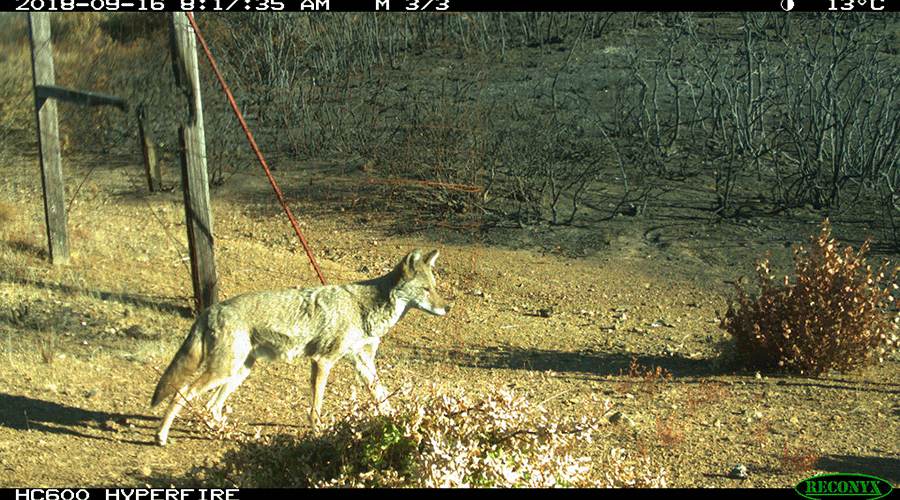
Hidden cameras spot wildlife returning home after 2018 megafire
During the summer of 2018, the Mendocino Complex Fire ripped through UC’s Hopland Research and Extension Center (HREC), transforming the Northern California property’s grassy, oak-dotted hillsides into a smoldering, ash-covered wasteland.
Canadian wildfires and air quality: MSU experts can comment on public health, climate change impacts, pets and wildlife
Contact: Emilie Lorditch, University Communications, [email protected]; Nardy Baeza Bickel, MSU Health Sciences: [email protected]; EAST LANSING, Mich. – Wildfires in Canada are creating hazy skies and prompting air quality concerns from the Midwest to the East Coast of the United States. Michigan…
Air Quality from Wildfires Also Bad for the Brain, Expert Says
“Air pollution is a major public health issue that has been related to a variety of ailments such as asthma, lung cancer, heart disease, and stroke,” says Domenico Praticò, M.D., Professor and Director of the Alzheimer’s Center at Temple. “We…
GW Experts Available: Smoke From Canadian Wildfires Remains Hazardous, Expands Reach
WASHINGTON (June 8, 2023)–The U.S. east coast continues to face hazardous and unhealthy air quality levels from Canada’s wildfires with many cities including New York, Philadelphia and Washington, D.C. experiencing the worst air quality in years. The National Oceanic and…
US forests face an unclear future with climate change
Climate change might compromise how permanently forests are able to store carbon and keep it out of the air. In a new study, researchers found that the regions most at risk to lose forest carbon through fire, climate stress or insect damage are those regions where many forest carbon offset projects have been set up. The authors assert that there’s an urgent need to update these carbon offsets protocols and policies.
How Climate Change and Wildfire Smoke Can Impact the Skin
New research shows that as wildfires are increasing in frequency, intensity and extent, and affecting air quality across the U.S., they are having a detrimental effect on people with and without skin conditions.
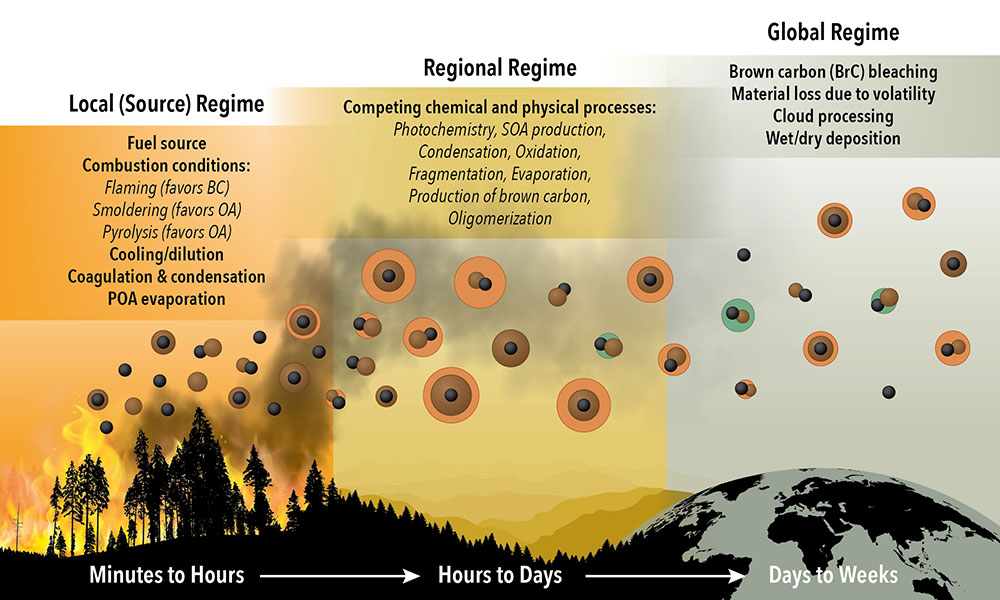
Scientists Map Changes in Soot Particles Emitted from Wildfires
We need a better understanding of the particles emitted by wildfires, including how they evolve, so we can improve our predictions of their impacts on climate, climate change, and human health. Atmospheric scientists at Brookhaven National Laboratory and collaborating institutions recently published a study that suggests the global climate models aren’t getting the full picture. Their data could change that.

Ogo Enekwizu Brings Soot-seeded Clouds into the Laboratory
Tiny particles in Earth’s atmosphere can have a big impact on climate. But understanding exactly how these aerosol particles form cloud drops and affect the absorption and scattering of sunlight is one of the biggest sources of uncertainty in climate models. Ogochukwu (Ogo) Enekwizu is trying to tame that complexity by creating soot-seeded aerosol particles in a lab.
New Technique Maps Large-scale Impacts of Fire-induced Permafrost Thaw in Alaska
For the first time, researchers have developed a machine learning-based ensemble approach to quantify fire-induced thaw settlement across the entire Tanana Flats in Alaska, which encompasses more than 3 million acres. They linked airborne repeat lidar data to time-series Landsat products (satellite images) to delineate thaw settlement patterns across six large fires that have occurred since 2000. The six fires resulted in a loss of nearly 99,000 acres of evergreen forest from 2000 to 2014 among nearly 155,000 acres of fire-influenced forests with varying degrees of burn severity. This novel approach helped to explain about 65 percent of the variance in lidar-detected elevation change.
For 400 years, Indigenous tribes buffered climate’s impact on wildfires in the American Southwest
Devastating megafires are becoming more common, in part, because the planet is warming. But a new study led by SMU suggests bringing “good fire” back to the U.S. and other wildfire fire-prone areas, as Native Americans once did, could potentially blunt the role of climate in triggering today’s wildfires.
UO students working to develop community smoke management plan
Western wildfires have been increasing over the last decade and are expected to become more frequent. As a result, communities are seeing more unhealthy air days. In southern Oregon, Jackson County is creating a smoke management community response plan with the help of two University of Oregon graduate students.

NYS Mesonet Study Tracks the Impacts of Western Wildfires on New York Air Quality
The study finds that more frequent and intense western wildfires are not only impacting the air quality and visibility in surrounding areas, but also as far away as the East Coast.
Western Wildfires Spark Stronger Storms in Downwind States
A new study shows for the first time that wildfires burning in West Coast states can strengthen storms in downwind states. Heat and tiny airborne particles produced by western wildfires distantly intensify severe storms, in some cases bringing baseball-sized hail, heavier rain and flash flooding to states like Colorado, Wyoming, Nebraska, Kansas, Oklahoma, and the Dakotas.
UCLA-led study finds California’s greenhouse gas reductions could be wiped out by 2020 wildfires
A new analysis led by researchers with the University of California has found the 2020 wildfires in the state, the most disastrous wildfire year on record, put twice as much greenhouse gas emissions into the Earth’s atmosphere as the total reduction in such pollutants in California between 2003-2019.
EXPERT: Wildfire expert available to comment on wildfire policy, management, risk reduction, prescribed fire, response and recovery
Cassandra MoseleyUniversity of Oregon Research Professor, Institute for a Sustainable Environment; Senior Policy Advisor, Ecosystem Workforce ProgramCassandra Moseley focuses on wildfire policy and management including wildfire risk reduction, prescribed fire, community preparation, response, and recovery, as well as wildfire suppression…
Wildfires disproportionately affect the poor
With fires raging from California to Alaska, the 2022 wildfire season is off to a violent start. It’s an ominous sign of what promises to be another record-breaking fire season in the U.S. Roughly 2 million acres burned last month. And major fires are currently scorching Idaho, Utah and California, threatening tens of thousands of Americans’ homes and livelihoods. Many of those at risk are lower-income Americans who face canceled homeowners insurance policies and rising premiums, according to new research from the University of Georgia.
GW Experts Available to Discuss Extreme Weather and Climate Change
WASHINGTON (July 19, 2022) — Much of Europe has been hit by the latest record shattering heat wave. Such sweltering temperatures are part of global trends toward climate-fueled high temperatures that can lead to wildfires and damaging health consequences. The…
Disaster Scientist Explores Role of Place Attachment Following California Wildfires
Homeowners across the United States are not only experiencing higher mortgage rates and property costs, they’re also at risk of damage from an increasing number of disasters linked to natural hazards, including wildfires.
Forecasting Wildfires in an Unprecedented Time
With wildfires becoming stronger and more frequent, there is a need to predict when and how the next wildfire might occur. By examining statistical data of California’s wildfires dating back more than 60 years, Michael Mann, an associate professor of…
World “at a crossroads” in management of droughts, up 29% in a generation and worsening: UN
Humanity is “at a crossroads” when it comes to managing drought and accelerating mitigation must be done “urgently, using every tool we can,” says a new report from the United Nations Convention to Combat Desertification (UNCCD).
DROUGHT EXPERTS: University of Oregon researchers available to comment on the ongoing drought
University of Oregon researchers are available to comment on the ongoing drought. More academic experts can be found on the Oregon Experts page. Adell Amos Clayton R. Hess Professor of Law Adell Amos is an academic expert in water drought, natural…
Los Alamos National Laboratory, USGS partner to advance wildland-fire research
Los Alamos National Laboratory and the U.S. Geological Survey have entered a partnership to produce advanced computer models to predict the behavior of wildfires and prescribed fires. Models will help fire, land and emergency managers plan for, respond to and study the effects of fire on natural landscapes and in the wildland-urban interface.
UCI researcher gets NSF-backed grant to study wildfires’ effects on farmworkers
Michael Méndez of the University of California, Irvine has received a two-year, $400,000 grant from the National Center for Atmospheric Research’s Early Career Faculty Innovator Program. It will fund a joint project with researchers at NCAR – which is sponsored by the National Science Foundation – exploring the disparate treatment of undocumented Latino/Latina and Indigenous migrant farmworkers during extreme wildfire events in Sonoma County.
Fighting Fire with Data Science
UC San Diego has announced a joint appointment with Los Alamos National Laboratory with the appointment of Senior Scientist Rodman Linn to a three-year position with the Halıcıoğlu Data Science Institute (HDSI). This is the first joint appointment program between Los Alamos and a UC campus.
Dryer, warmer night air is making some Western wildfires more active at night
Firefighters report that Western wildfires are starting earlier in the morning and dying down later at night, hampering their ability to recover and regroup before the next day’s flareup. A study shows why: The drying power of nighttime air over much of the Western U.S. has increased dramatically in the past 40 years.
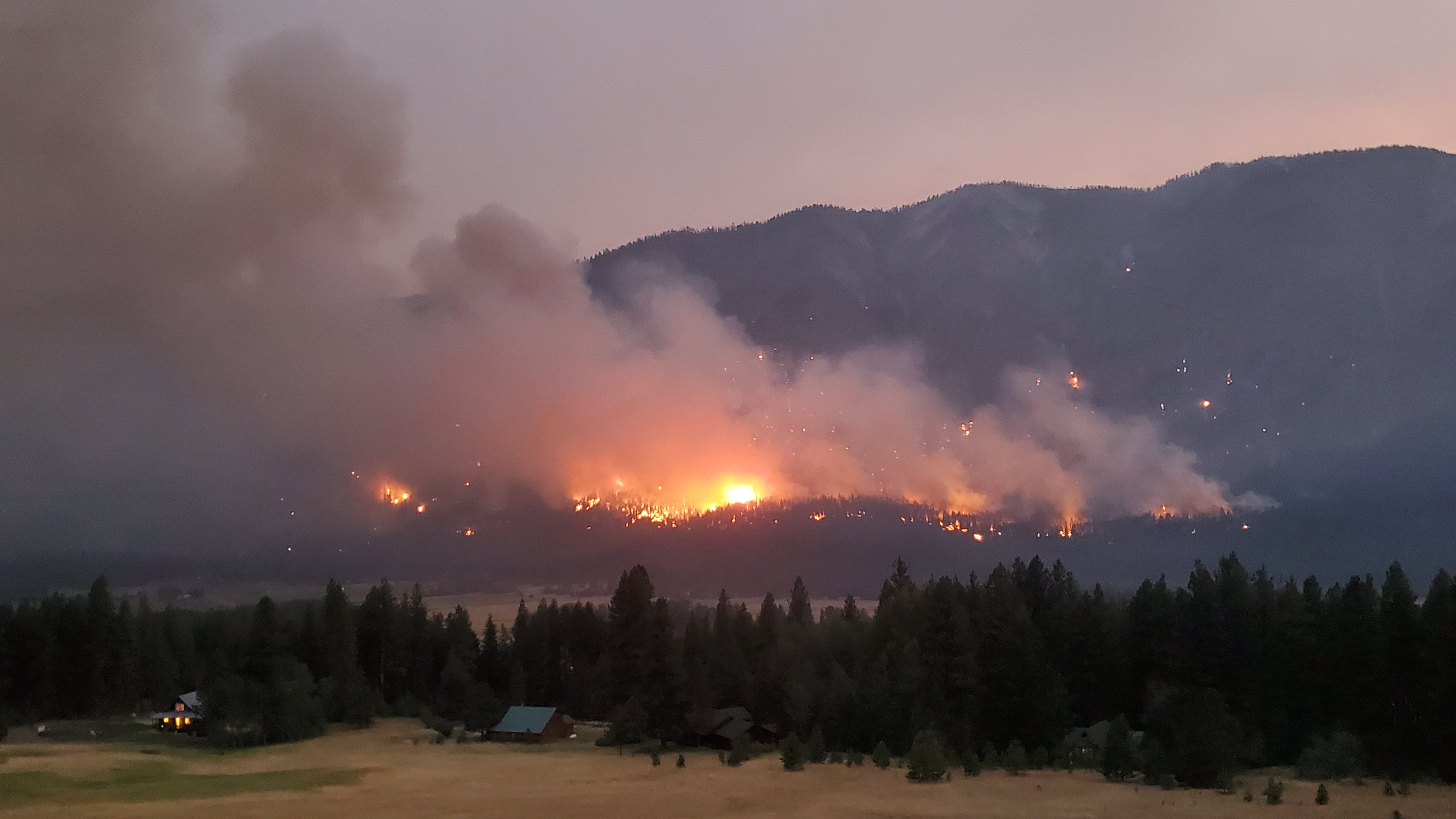
New report: State of the science on western wildfires, forests and climate change
Seeing the urgent need for change, a team of scientists from leading research universities, conservation organizations and government laboratories across the West has produced a synthesis of the scientific literature that clearly lays out the established science and strength of evidence on climate change, wildfire and forest management for seasonally dry forests. The goal is to give land managers and others across the West access to a unified resource that summarizes the best-available science so they can make decisions about how to manage their landscapes.
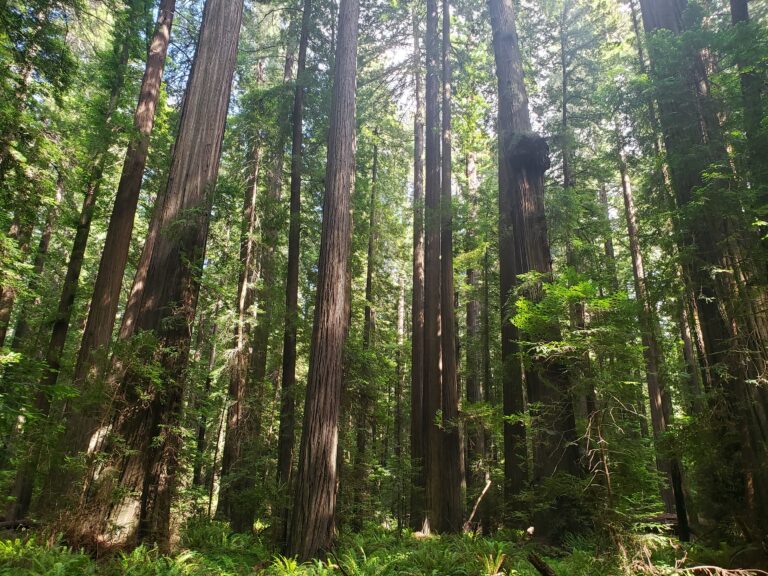
California’s carbon mitigation efforts may be thwarted by climate change itself
Irvine, Calif., July 22, 2021 – To meet an ambitious goal of carbon neutrality by 2045, California’s policymakers are relying in part on forests and shrublands to remove CO2 from the atmosphere, but researchers at the University of California, Irvine warn that future climate change may limit the ecosystem’s ability to perform this service.
Air pollution from wildfires impacts ability to observe birds
Researchers from the University of Washington provide a first look at the probability of observing common birds as air pollution worsens during wildfire seasons. They found that smoke affected the ability to detect more than a third of the bird species studied in Washington state over a four-year period. Sometimes smoke made it harder to observe birds, while other species were actually easier to detect when smoke was present.
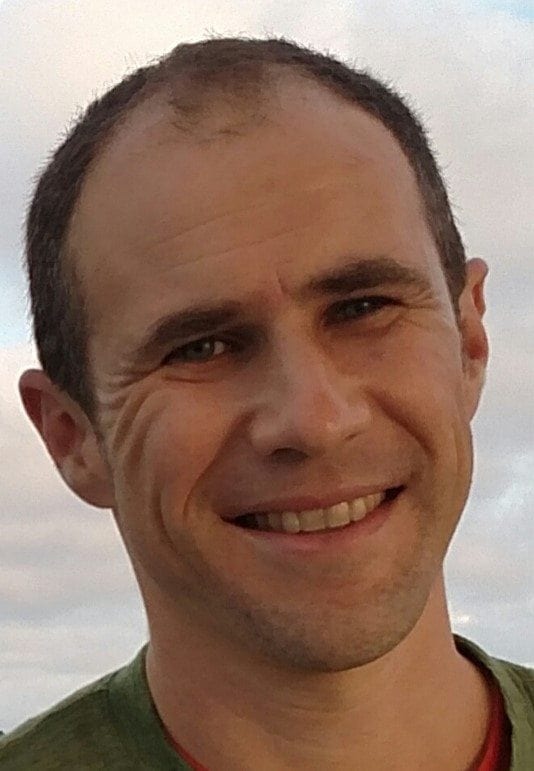
Johns Hopkins Expert Available to Discuss Heat Wave in U.S. West
As triple-digit temperatures scorch millions in California and the Desert West, stoking wildfires and exacerbating drought conditions, Johns Hopkins experts can discuss the environmental and health impacts of the heat wave, and how officials can better prepare for the rest…
Evacuating under dire wildfire scenarios
Climate change has made wildfires in the West catastrophic—and common disaster responses are unprepared for this new reality. A team of researchers led by the University of Utah proposed a framework for simulating dire scenarios, which the authors define as scenarios where there is less time to evacuate an area than is required.
Orangutan Finding Highlights Need to Protect Habitat
Wild orangutans are known for their ability to survive food shortages, but scientists have made a surprising finding that highlights the need to protect the habitat of these critically endangered primates, which face rapid habitat destruction and threats linked to climate change. Scientists found that the muscle mass of orangutans on the island of Borneo in Southeast Asia was significantly lower when less fruit was available. That’s remarkable because orangutans are thought to be especially good at storing and using fat for energy, according a Rutgers-led study in the journal Scientific Reports.
@POTUS decision comes at a time when we are bracing for a particularly challenging #wildfire season: Dr. Mary Rice. @atscommunity
Mary Rice, MD, MPH, is a pulmonary and critical care physician at Beth Israel Deaconess Medical Center and an assistant professor of medicine at Harvard Medical School. As a physician, she cares for adults with respiratory disease, including asthma and chronic obstructive…
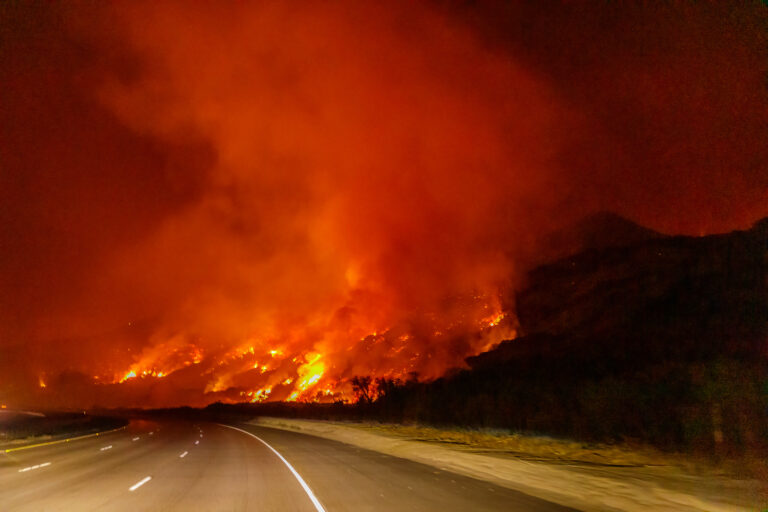
California’s wildfire season has lengthened, and its peak is now earlier in the year
Irvine, Calif., April 22, 2021 — California’s wildfire problem, fueled by a concurrence of climate change and a heightened risk of human-caused ignitions in once uninhabited areas, has been getting worse with each passing year of the 21st century. Researchers in the Department of Civil & Environmental Engineering at the University of California, Irvine have conducted a thorough analysis of California Department of Forestry and Fire Protection wildfire statistics from 2000 to 2019, comparing them with data from 1920 to 1999.

Story tips: Quantum building blocks, high-pressure diamonds, wildfire ecology, quick cooling tooling and printing on the fly
ORNL story tips: Quantum building blocks, high-pressure diamonds, wildfire ecology, quick cooling tooling and printing on the fly
Area burned by severe fire increased 8-fold in western US over past four decades
The number of wildfires and the amount of land they consume in the western U.S. has substantially increased since the 1980s, a trend often attributed to ongoing climate change.
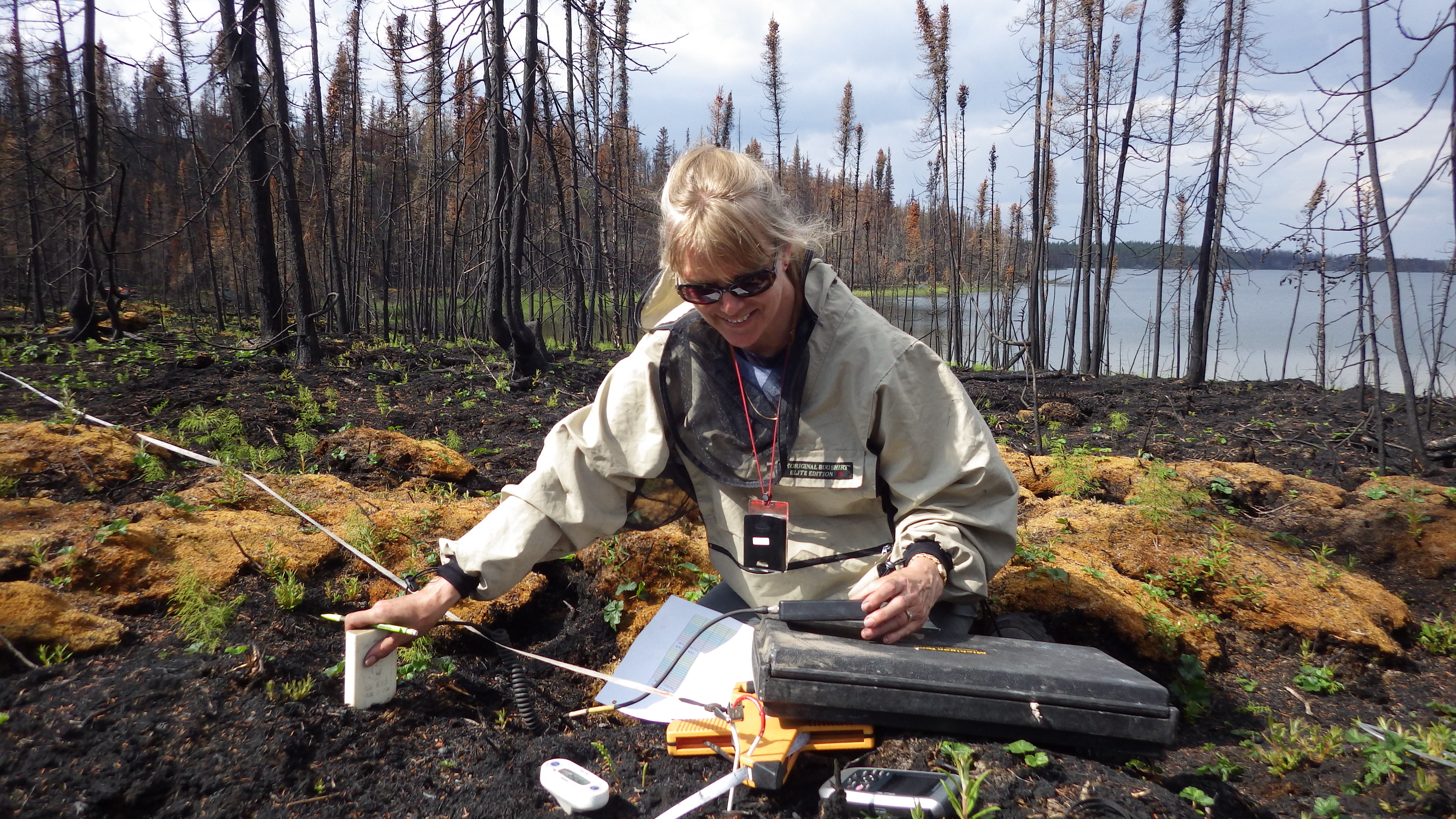
Michigan Tech remote sensing, ecology experts available to speak to wildfire carbon emissions, climate-related ecosystem changes
Michigan Technological University has remote sensing and ecology experts available to speak to wildfire carbon emissions, climate-related ecosystem changes, and the effects of wildfires on peatlands — which act as huge carbon sinks and when burned release an incredible amount…
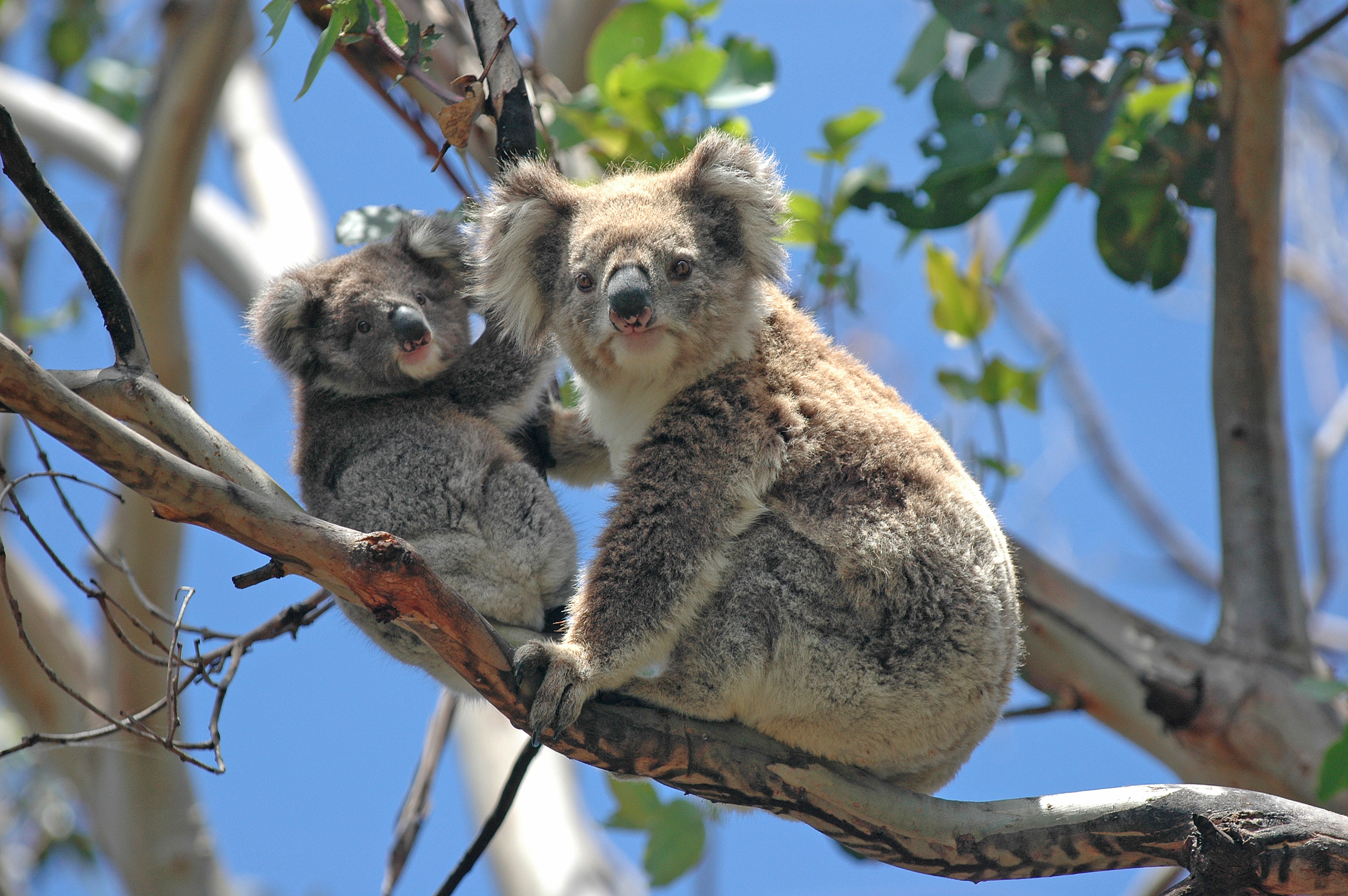
Learning lessons from bushfires for koala survival
A University of Adelaide-led research project will study the clinical data of koalas injured in last summer’s devastating bushfires to give them the best possible chance of survival and recovery in future bushfires.